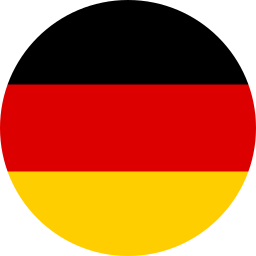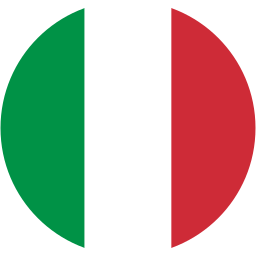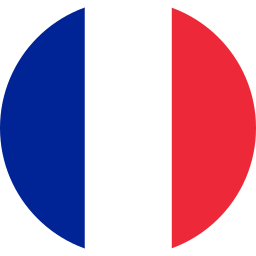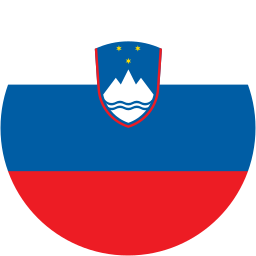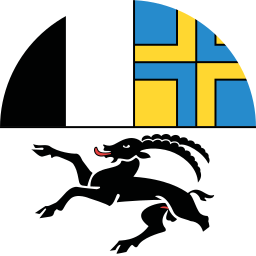The functionality of the Lexicon Alpinum arises largely from the symbols (icons) in the title bar and on the right margin of each entry; the meaning of the icons also appears when the mouse arrow is placed over them (mouseover). Each entry can be directly addressed via the citation icon (") and linked via another icon (chain icon). The respective keyword of the article can also be visualised on the interactive map. The icon on the right margin ('Data') leads to all the information gathered in the info windows of the interactive map; above all, the links to corresponding articles in reference dictionaries appear. In the case of concepts, also links to Wikidata data objects as well as to other standard data are provided; in this way, the material of VA will be contextualized lexicographically and encyclopedically.
However, the entries of the Lexicon Alpinum are not only linked to norm data from outside the project, but project-specific norm data are also provided and appear in the title bar immediately after the keyword. Depending on whether the keyword represents a morpho-lexical type, a base type or a concept, these VA norm data are indexed with 'Lnn', 'Bnn' or 'Cnn'. Finally, an icon is also available for downloading all information.
(Quote) (Visualize on the map)
(auct. Myriam Abenthum – trad. Mia-Sophie Burgdorf)
ALPINE HUT - Concept (Quote) (Visualize on the map)
Anke (gem.) - Morpho-lexical type (Quote) (Visualize on the map)
"Anke(n), (replaced by Butter) Sm ‛Butter' per wobd. (8th century), mhd. anke, ahd. anko.
Although only German has preserved the word, g. *ankwōn m. ‛fat, butter' is to be assumed as a continuation of ig. (weur.) *ongwen- ‛ointment, fat, butter' (in various degrees of ablaut), cf. l. unguen n. ‛fat, ointment', air. imb ‛butter' (*ṇgwen-) to the verbal root ig. *ongw- ‛to anoint' in ai. anákti, l. unguere et al. Thus, originally ‛ointment, grease'." (Kluge, 47 under Anke(n))
The Latin base mentioned with the velar has indeed been displaced by the variant *ŭngĕre (REW 9069) in the immediately adjacent Romanic area, as indicated by the palatalisation of g in roh. (Surselvic) unscher, roh. ((Engadine) uondscher, ita. ungere and others (cf. HWdR, 971). In what is now French, however, cognates of lat. ŭnguĕre are predominant (cf. FEW 14, 36 f.). These include forms with a clear semantic reference to milk processing, such as ogner 'donner son lait | giving milk' (with change of conjugation class) and ogna 'quantité de lait que donne une vache en une fois | amount of milk a cow gives at one time'. Incidentally, the participle unctum has given rise to the well attested fur. term for BUTTER ont, lld. onto, vonto (cf. ron. unt) in the Romanic-speaking part of the VA area. The proposed borrowing from Latin Romatic is phonetically possible and semantically self-evident, considering the numerous other romanisms in this onomasiological field. With regard to the much wider distribution of the type butyru(m), it is also reasonable to see an older type in the terms derived from the verb variants ŭnguĕre, *ŭngĕre, which was later overwritten by butyru(m).
(auct. Thomas Krefeld – trad. Mia-Sophie Burgdorf)
baita (vor) - Base type (Quote) (Visualize on the map)
From an Italianist point of view, DELI suggests roa. baita, bait < Old High German wahta – but without considering the slv. bajta 'bad house' or the gsw. (Alemannic) Beiz, bar. Boazn, Beisl 'pub' (unfortunately, this widespread type is missing in the SDS, the Idiotikon and the BSA). The mentioned Germanic forms with ts, s can thus not be explained.
From a Germanistic point of view, Kluge (2011, 106 under Beiz(e) and Beisel) derives the gsw. (Alemannic) and bar. forms from Yiddish bajis 'house' < hbo. bajit 'house', which does not correspond to the roa. t (cf. EWD I, 203). Direct mediation from Hebrew (meaning without Yiddish mediation) is historically implausible given the large area and the connection to everyday life in Alpine farming. The semantics of the Romance forms ('hut, Alpine hut, stable', etc.) as well as the Slovenian records ('bad house') do not provide any justification for the assumption of a large-scale distribution of an originally adstratal borrowing from the Friulian-Slovenian contact area. A substratal borrowing from the pre-Slavic and pre-Germanic Old Romance of the Eastern Alps seems much more plausible. Ultimately, it appears to be a pre-Roman Alpine word.
(auct. Thomas Krefeld – trad. Mia-Sophie Burgdorf)
*barica (lat) (* = Reconstructed) - Base type (Visualize on the map)
Barn (gem.) - Morpho-lexical type (Quote) (Visualize on the map)
In Kluge's etymological dictionary, only the first meaning 'manger, hayloft' is given in the sense of a feeding vessel. In other dictionaries, however, the definition as a part of a building in which fodder is stored is also given (cf. BWB, DWB, Idiotikon). The noun barn also exists in English as "A covered building for the storage of grain; and, in wider usage, of hay, straw, flax, and other produce of the earth" (cf. OED).
In German, the etymology of the word seems uncertain. The Etymological Dictionary of the German Language considers a connection with gem. *ber-a- 'to carry'. This probably includes the Old English (ae.) beren or bere-ærn, the ae. bere 'barley'. However, there is no German equivalent for the latter.
(auct. Markus Kunzmann – trad. Mia-Sophie Burgdorf)
bassus (lat) - Base type (Quote) (Visualize on the map)
(auct. Myriam Abenthum – trad. Mia-Sophie Burgdorf)
baubor (lat) - Base type (Visualize on the map)
Beil (gem.) - Morpho-lexical type (Quote) (Visualize on the map)
Attested in Old High German as bîhal (cf. AWB under bîhal); it is a "German and Dutch word only". However, there are lexical equivalents in some Celtic languages, e.g., in Old Irish bíail, biáil or Welsh bwyall, bw(y)ell (cf. Kluge under Beil).
(auct. Markus Kunzmann – trad. Mia-Sophie Burgdorf)
Bitsche (gem.) - Morpho-lexical type (Quote) (Visualize on the map)
The DWB assumes that the Slavic words evolved from the German Bottich. For the Bottich, on the other hand, Kluge states that it was "certainly borrowed from the Romanic area". However, it assumes a short form of the word apothēca 'wine cellar' as etymon (cf. Kluge under Bottich), although it also states that the word is originally Upper German. For the Bitsche itself, however, another etymology comes into question. In the Treccani article on bottìglia (cf. Treccani under bottìglia), the late Latin bŭ(t)ticŭla, a diminutive of buttis 'barrel', is given as the etymon. Butsch also exists in Swiss German dialects (cf. Idiotikon under Butsch) and the Idiotikon mentions Romansh butschin as a cognate corresponding to ita. botticino. If one assumes a long-distance assimilation of the root vowel through the /i/ and a later raising of /y/ to /i/, which is typical in Bavarian, Bitschn as it is mainly found in derviates such as Millibitschn (cf. Map Milchbitsche) could be explained in this way.
(auct. Markus Kunzmann – trad. Mia-Sophie Burgdorf)
brama (roa.) - Morpho-lexical type (Quote) (Visualize on the map)
(auct. Myriam Abenthum | Thomas Krefeld | Stephan Lücke – trad. Mia-Sophie Burgdorf)
*brod (gem) (* = Reconstructed) - Base type (Quote) (Visualize on the map)
(auct. Myriam Abenthum – trad. Mia-Sophie Burgdorf)
*brottiare (vor) (* = Reconstructed) - Base type (Quote) (Visualize on the map)
(auct. Thomas Krefeld – trad. Mia-Sophie Burgdorf)
brousse (roa.) - Morpho-lexical type (Quote) (Visualize on the map)
"D'apr. Brüch dans Z. rom. Philol. t. 35, p. 635, GAM. Rom.1t. 1, p. 369, t. 2, p. 38 et Gamillscheg dans Z. rom. Philol. t. 40, p. 148, ce groupe de mots est issu du got. *brǔkja « ce qui est brisé », dér. du got. gabruka « morceau » (FEIST, s.v. gabruka; KLUGE20, s.v. Brocken). E. Schüle dans Pat. Suisse rom., s.v. brochyè, estime au contraire qu'un terme got. peut difficilement s'être implanté dans le vocab. laitier des Alpes, et propose une base préromane *brottiare, d'orig. inconnue.” (cf. TLFi under brousse 1).
(auct. Thomas Krefeld – trad. Mia-Sophie Burgdorf)
bruma (lat) - Base type (Quote) (Visualize on the map)
(auct. Myriam Abenthum | Thomas Krefeld – trad. Mia-Sophie Burgdorf)
BUTTER - Concept (Quote) (Visualize on the map)
butyru(m) (lat) - Base type (Quote) (Visualize on the map)
τὸ βούτυ̅ρον is Greek for 'the milk's fat' (τὸ πῖον τοῦ γάλακτος [Corpus Hippocraticum]). The Corpus Hippocraticum (a collection of medicinal texts that were recorded between the sixth century BC and second century AD) gives an account of the Scythians producing cheese from mare’s milk (Corp. Hipp., Morb. 4, 20). The method described therein has remained the same and is occasionally applied to this day. Reportedly, the Scythians filled a barrel (hollow wooden vessels: ἐς ξύλα κοῖλα) with the mare’s milk which was then shaken. It is not specified in the Corpus Hippocraticum what the butter was used for by the Scythians (as a food or as a remedy).
Similar to the Corpus Hippocraticum, the impression of the use butter as something typically 'barbaric' emerges when reading Pliny the Elder (NH 28, 35: e lacte fit et butyrum, barbararum gentium lautissimus cibus et qui divites a plebe discernat). This may be due to the (still) predominant use of olive oil as cooking fat in the Mediterranean world. In the Greco-Roman region, butter seems to have been used more as a remedy rather than a cooking ingredient. There certainly are numerous records of βούτυ̅ρον/butyrum in the context of medical literature (i.a. in Celsus and Galen, apart from Hippocrates). Pliny the Elder also denotes the use of butter as a remedy (e.g., against neck pain: NH 28, 52)
In addition to the neuter gender βούτυ̅ρον, there is also the masculine version ὁ βούτυ̅ρος. In both cases, the accent falls on the third to last syllable (proparoxytone). The Greek word seems to have been adopted into Latin (butyrum).
There are two accent variants of the base type butyru(m) that need to be distinguished:
- paroxytone Lat. butӯru(m) which is the origin of the Ita. type butirro (cf. DELI 179);
- Lat. bútyru(m) with the accent on the initial syllable which was inherited from Gr. βούτυ̅ρον. From this came the Old French bure resulting in Modern French beurre. This type was borrowed by Italian and led to Ita. burro (cf. DELI 178).
Therefore, it seems that the type butyrum largely repressed the meaning of 'to grease' contained in Lat. unguere / *ungere.
(auct. Thomas Krefeld | Stephan Lücke – trad. Mia-Sophie Burgdorf)
cabane / capanna (roa.) - Morpho-lexical type (Quote) (Visualize on the map)
The phonetic variants of this morpho-lexical type can be grouped into types on the basis of the following criteria:
(1) Variance of the anlaut:
- [k-] preserved; cf. fra. cabane;
- [k-] palatalised:
- [k-] > [ts-]; cf. frp. tsˈăvănə.
- [k-] > [tɕ-]; cf. Engadine chamanna;
- [k-] > [ʧ-]; cf. frp. ʧavˈaːna.
- [k-] > [ts-]; cf. frp. tsˈăvănə.
- [-p-] preserved; cf. ita. capanna;
- [-p-] weakened:
- - sonorisation [-p-] > [b-]; cf. fra. cabane;
- - sonorisation and spirantisation [-p-] > [v-];
- - sonorisation [-p-] > [b-]; cf. fra. cabane;
- [-a];
- [-ə];
- [-e];
- [-o].
(auct. Thomas Krefeld | Stephan Lücke – trad. Mia-Sophie Burgdorf)
*cala (lat) (* = Reconstructed) - Base type (Quote) (Visualize on the map)
(auct. Thomas Krefeld – trad. Mia-Sophie Burgdorf)
capănna(m) (lat) - Base type (Quote) (Visualize on the map)
The underlying Latin capanna is documented only once (in Isidore) according to FEW 2, 244–246 under capanna; "its origin is obscure" (FEW 2, 244 under capanna). The forms with -m- form an Alpine variant (cf. DRG 3, 236–239 under chamona). Regarding the semantics of the roh. forms it says: "The meaning 'hut, simple, meagre house' of the modern, literarily inclined form camona occupies an intermediate position between fam. baita DRG 2, 76 under baita) 'shack, dilapidated house, bad hut' and teja 'hut, Alpine hut' (cf. also fögler (239))."
(auct. Thomas Krefeld – trad. Mia-Sophie Burgdorf)
*cappellus (lat) (* = Reconstructed) - Base type (Quote) (Visualize on the map)
(auct. Myriam Abenthum – trad. Mia-Sophie Burgdorf)
caput (lat) - Base type (Quote) (Visualize on the map)
(auct. Myriam Abenthum – trad. Mia-Sophie Burgdorf)
caseu(m) (lat) - Base type (Quote) (Visualize on the map)
(auct. Myriam Abenthum | Thomas Krefeld – trad. Mia-Sophie Burgdorf)
cautum (lat) - Base type (Quote) (Visualize on the map)
(auct. Myriam Abenthum | Thomas Krefeld – trad. Mia-Sophie Burgdorf)
cellārium (lat) - Base type (Quote) (Visualize on the map)
However, the phonetics of the Alemannic and Bavarian forms are complicated, as they show no reflex of the Romanic palatalisation of the initial [k-]. This problem arises not only for southern Germany, but for the entire early Latin-Romanic/German borrowing area, as shown by the juxtaposition of the shifted (deu. Zwiebel < lat. *cēpŭlla; REW, 1820 under cēpŭlla) and unshifted forms (deu. Kiste < lat. cĭsta 'basket', deu. Wicke < lat. vĭcia). Note in this context the name of the river deu. Neckar < lat. Nicer (cf. RE, XVII,1 and dKP 4, 88) without any palatalisation. This name was borrowed with a certain probability before 260–280 AD, since the areas of Germania superior on the right bank of the Rhine, including the entire course of the Neckar, were abandoned in this period. Thus arises a terminus post quem for palatalisation in the Northern Alpine Empire or, in more cautious terms, for its general implementation. Given the fundamentally old age of Romanic palatalisation, it is not convincing to argue only with the time of the borrowing. Rather, one should consider that unshifted, conservative and shifted, innovative variants coexisted in Early Romanic over a long period of time. Note that the plosive did by no means survive only in the early romanised, isolated and quite distant Sardinian (cf. the well-known examples such as srd. kentu 'hundred' \ lat. centu[m] etc.), but also seems to have existed in Dalmatian. In this case, the distance to Alpine Romanic is no longer very great (cf. Dalmatian kapula < lat. *cēpŭlla; REW, 1820 under cēpŭlla).
(auct. Thomas Krefeld – trad. Mia-Sophie Burgdorf)
chamona (roa.) - Morpho-lexical type (Quote) (Visualize on the map)
(auct. Stephan Lücke)
chaschöl (roa.) - Morpho-lexical type (Quote) (Visualize on the map)
(auct. Myriam Abenthum | Thomas Krefeld – trad. Mia-Sophie Burgdorf)
CHEESE - Concept (Quote) (Visualize on the map)
CHEESE OF THE LIQUID AFTER THE FIRST COAGULATION OF THE SOLID MATTERS - Concept (Quote) (Visualize on the map)
clarus (lat) - Base type (Quote) (Visualize on the map)
(auct. Myriam Abenthum – trad. Mia-Sophie Burgdorf)
clat (roa.) - Morpho-lexical type (Quote) (Visualize on the map)
(auct. Beatrice Colcuc)
coagŭlum (lat) - Base type (Quote) (Visualize on the map)
(auct. Myriam Abenthum | Thomas Krefeld – trad. Mia-Sophie Burgdorf)
cohortem (lat) - Base type (Quote) (Visualize on the map)
Varro refers to two derivations of the word cohors he considers plausible: It could either be connected to the verb coorior and thus denote the place around which livestock gathers (according to R.G. Kent's translation [Varro. On the Latin Language, Volume I: Books 5-7. Translated by Roland G. Kent. Loeb Classical Library 333. Cambridge, MA: Harvard University Press, 1938], although this meaning is hard to bring in line with the other recorded meanings in Georges and, more generally, the basic meaning of the simplex oriri altogether), or it could be related to the Greek χόρτος, which itself seems to be linked to Lat. hortus (Varro, De Lingua Latina 5,88: cohors quae in villa, quod circa eum locum pecus cooreretur, tametsi cohortem in villa Hypsicrates dicit esse Graece χόρτον apud poetas dictam). Both hortus and χόρτος originally have quite similar meanings to cohors (on χόρτος see, e.g., Il. 11, 774 or 24, 640).
(auct. Thomas Krefeld | Stephan Lücke – trad. Mia-Sophie Burgdorf)
colare (lat) - Base type (Quote) (Visualize on the map)
(auct. Myriam Abenthum | Thomas Krefeld – trad. Mia-Sophie Burgdorf)
crama (vor) - Base type (Quote) (Visualize on the map)
In Modern French, the form crème became established and was then borrowed into Italian as crema (cf. DELI 1: 295). However, the base type crama prevailed in Piedmontese, Lombard and Romansh although the initial was sonorised, like, e.g., roh. (Sursilvan) groma / roh. (Engadine) gramma (cf. HWdR, 381; DRG, 7, 687, under gramma).
Here, the German lexical type Rahm is assigned to crama as well, thus suggesting a new derivation based on the language contact in Alpine regions. In the Kluge 2011, under Rahm, the etymology is outlined from an Indo-Germanic perspective:
"Rahm S[.]m 'cream' std. (11. cent.), mhd. roum, mndd. rōm(e)[.] From wg. *rauma- m. 'Rahm', also in ae.rēam; with the respective ablaut anord. rjúmi. If *raugma- is to be assumed, avest. raoγna- n., raoγniiā- f. 'butter' are comparable. Further origin unclear. The Modern High German form is based on a vernacular that led to the development from mhd. ou to ā . When Rahm is semantically differentiated against Sahne ('cream'), it refers to sour cream. Prefix derivation: entrahmen; particle derivation: abrahmen. Furthermore nndl. room." (Kluge 2011, online under Rahm 1)
In this approach, the dialectal connections are ignored. However, the popularity of the type fra. crème / ita. crema in the Romanesque Alpine region, more specifically, immediately below the Germanic-Romansh language border (cf. map crama), must be taken into account.
The corresponding phonetic types with the vowel variants [æ], [e], [o] and [a] self-evidently lead back to a common original form, namely [a], since the raising of a stressed /a/ > [e] or > [æ] in an open syllable and rounding of an /a/ > [o] before a labial are completely regular. The resulting base type thus seems to be originating from Gallic (meaning from Celtic) (cf. FEW 2, 1271–1274, under crama). The word is documented in Venantius Fortunatus (*540–600/610), who was born in Valdobbiadene in the south-eastern fringe of the Alps, north of Teviso. It would not be very plausible to try to explain the common area of these synonymous types deu. Rahm and roa. crama based on a coincidental intersection. Rather, the German base type should be assigned to the same Gallo-Roman base type.
The reduction of the lat.-roa initial [kr-] > deu. [r-] must be viewed related to the fact that 'in ger., h- before a consonant recedes in the 9th cent.' (FEW 16, 249, under *hrokk), as numerous similar forms show. In the early period of Germanic-Romansh language contact, the variant [hr-] must have still existed since fra. froc 'frock' cannot be traced back to roc, but only to hroc with the substitution of the laryngeal fricative by a labiodental fricative. Kluge writes:
"Rock[.] Sm std. (9. cent.), mhd. roc, rok, ahd. (h)roc, as. rok [.] From wg. *rukka- m. 'Rock', also af. rokk. Outside of Germanic, air. rucht 'tunic', kymr. rhuchen 'coat' are comparable. Anything else is unclear. There is another version with the initial hr- in ahd. hroc, as. hroc, afr. hrokk that likely led to Frack through French (cf. Kluge 2011, online, under Frack). Also nndl. rok." (Kluge 2011, online, under Rock).
This also explains the juxtaposition of eng. horse and deu. Ross g. *hrussa (cf. Kluge 2011, under Ross) and deu. röcheln and nisl. hrygla 'rattling throat', lav. kraũkât 'to cough, to cough up sputum' ine. *kruk- 'to snore, to wheeze, to grunt' (cf. Kluge 2011, under röcheln and the like).
(auct. Myriam Abenthum | Thomas Krefeld – trad. Mia-Sophie Burgdorf)
*crassia (lat) (* = Reconstructed) - Base type (Quote) (Visualize on the map)
In the Alpine region, this base type occasionally yielded terms for RAHM, i.e. the fatty part of the milk.
(auct. Myriam Abenthum | Thomas Krefeld – trad. Mia-Sophie Burgdorf)
CREAM - Concept (Quote) (Visualize on the map)
crŭsta (lat) - Base type (Quote) (Visualize on the map)
(auct. Myriam Abenthum | Stephan Lücke – trad. Mia-Sophie Burgdorf)
Eimer (gem.) - Morpho-lexical type (Quote) (Visualize on the map)
Besides the German-language records, cognates are also found in Slovenian dialects, mainly with the meaning 'bucket', e.g., ajmar or ajmarelj, ejmpar, jempa, lambar and lempa (cf. the map Bucket). Related word forms are found throughout the eastern Alpine region, especially as loan words in Slovenian dialects. The phonetic realisation as /empar/ in particular, which can be deduced from the records of the SLA, shows the transfer of the word type via Bavarian, where Empa is also being used. The dictionaries (cf. DWB: under Eimer; EWBD: under Eimer) see the ahd. eimbar (cf. AWB: under Eimer) as a derivative from the Latin amphora, which in turn was borrowed from the Gr. ἀμφορεύς (amphoreús) (cf. Kluge: under Eimer).
(auct. Markus Kunzmann – trad. Mia-Sophie Burgdorf)
excŏcta (lat) - Base type (Quote) (Visualize on the map)
It should, however, be noted that two phonetic types exist in Ladin:
(a) with an initial [ʃk-] (cf. [ʃkota] in Livinallongo as well as Friaul);
(b) with an initial [tʃ-] (cf. [tʃot(e)] in the remaining Sella region of Ladinia).
| romanisch | deutsch. | slowenisch | |||
| z.B. valdost. (é)couette | ita. scotta | lad. tʃot(e) ← | ← Adstrat | dial. Schotte(n) | dial. skuta |
| ↑ | ↑ | ↑ Substrat ↑ | ↑ Substrat ↑ | ||
| lat. excocta | |||||
This base type is remarkable with regard to semantics because it offers a characteristic example of metonymical polysemy. It denotes the two products that result when the milk is heated or decocted (lat. EXCOQUERE) during coagulation, which are fluid on the one hand and matter, or whey cheese, and the surging protein particles on the other hand (cf. VALTS IV, 204).
(auct. Myriam Abenthum | Thomas Krefeld – trad. Mia-Sophie Burgdorf)
exsūctus (lat) - Base type (Quote) (Visualize on the map)
(auct. Myriam Abenthum | Thomas Krefeld – trad. Mia-Sophie Burgdorf)
flōrem (flōs) (lat) - Base type (Quote) (Visualize on the map)
Derived from 'blossom', flōs often denotes THE BEST, MOST BEAUTIFUL PART OF A THING, as in Latin flos aetatis 'the blossom of years, youthful vigour, fullness of youth' (cf. Georges, under flōs), an expression which has been preserved in Romance languages (as in fra. la fleur de l'âge 'the youth'; cf. FEW, 3, 630-638, under flōs). Similarly motivated are fra. fleur de la farine 'la partie la plus fine de la farine', ita. fior della farina, Engadine flur d'farina or gsw. (Swiss German) Blume (cf. FEW, loc. cit.). Meanings having to do with the SURFACE, the HIGHEST POINT of things, as in fro., frm. à fleur de 'à la surface, au niveau de', can be explained as originating from blossom.
Both semantic dimensions ('good' and 'on top') may mutually motivate the designation of the concept CREAM, which already developed in Latin (flos lactis 'cream') and is still well documented in the study area today (cf. also ita. fior di latte 'cream'). Consequently, verbs such as fra. défleurer or Neo-Occitan sanflurá, sonflurá 'to skim' can be easily interpreted (cf. FEW, loc. cit.).
(auct. Myriam Abenthum | Thomas Krefeld – trad. Mia-Sophie Burgdorf)
formaticu(m) (lat) - Base type (Quote) (Visualize on the map)
(auct. Myriam Abenthum | Thomas Krefeld – trad. Mia-Sophie Burgdorf)
fraìma (roa.) - Morpho-lexical type (Quote) (Visualize on the map)
Other dictionaries indicate that the type is found not only in the south of the Veneto and in Ponte nelle Alpi, but also in other varieties in the province of Belluno, especially in Agordino. It occurs in Zoldo Valley as well, this time in the meaning of 'autumn' (cf. Rossi 1992, 314, under fardìma; Pallabazzer 1989, 189, under ferdíma). It is interesting to note that this form extends only as far as the territory of the so-called Sellaladinia and does not cross its boundaries (cf. Blad under auton).
This morpho-lexical type belongs to the base type lat. frigĭdus ('cold') (FEW 3, 797 under frigĭdus).
(auct. Beatrice Colcuc – trad. Mia-Sophie Burgdorf)
Gaden (gem.) - Morpho-lexical type (Quote) (Visualize on the map)
The word is attested as a neuter since Old High German times as gadum or gadem. A connection with words of other Indo-European languages is established via a word for 'let' or 'release', for Germanic *ǵhə-t-mo- ‛free space, empty room' is assumed (cf. Kluge 2011, online under Gaden). In Danish, gade means 'street' (Duden under Gaden). In the VerbaAlpina area, the word is mostly bound in compounds, especially frequently in the Alemannic dialects of Switzerland, where it denotes a single room (milk room, cattle shed on the alpine pasture, hay room in the alpine barn) (cf. Idiotikon under gădem), while, especially in South Tyrol, it refers to a barn. In Northern Tyrol, on the other hand, forms based on Stadel are generally used; cf. also 'Ore', i.e., the open space between houses. Gaden or Gadem was already considered obsolete in the 19th century, as shown by a glance at Grimms' dictionary. At that time, the word was still present as both a neuter and a masculine (cf. DWB under Gadem).
(auct. Markus Kunzmann – trad. Mia-Sophie Burgdorf)
Geiß (gem.) - Morpho-lexical type (Visualize on the map)
Gepse (gem.) - Morpho-lexical type (Quote) (Visualize on the map)
(auct. Marina Pantele – trad. Mia-Sophie Burgdorf)
GOAT - Concept (Quote) (Visualize on the map)
gumьno (sla) - Base type (Quote) (Visualize on the map)
(auct. Aleksander Wiatr – trad. Mia-Sophie Burgdorf)
Hacke (gem.) - Morpho-lexical type (Quote) (Visualize on the map)
According to Kluge, Hacke is the instrumental form of the verb hacken (cf. Kluge under Hacke). The type is restricted to the West Germanic languages (ahd. hackōn, mnd. hakken, mhd./mnl. hacken, nl. hakken, aengl. -haccian, eng. to hack) (cf. DWDS under hacken). Hacke as a designation of the concept HEEL is missing in Upper German as well as in Middle High German, possibly because the term Ferse is used there.
(auct. Markus Kunzmann – trad. Mia-Sophie Burgdorf)
hiša (sla.) - Morpho-lexical type (Quote) (Visualize on the map)
(auct. Aleksander Wiatr – trad. Mia-Sophie Burgdorf)
hûs (goh) - Base type (Quote) (Visualize on the map)
(auct. Thomas Krefeld)
hutta (goh) - Base type (Quote) (Visualize on the map)
(auct. Markus Kunzmann)
iŭncus (lat) - Base type (Quote) (Visualize on the map)
(auct. Myriam Abenthum | Thomas Krefeld | Stephan Lücke – trad. Mia-Sophie Burgdorf)
Jauche (gem.) - Morpho-lexical type (Quote) (Visualize on the map)
(auct. Marina Pantele – trad. Mia-Sophie Burgdorf)
kajža (sla.) - Morpho-lexical type (Quote) (Visualize on the map)
(auct. Aleksander Wiatr)
Kessel (gem.) - Morpho-lexical type (Quote) (Visualize on the map)
The nhd. Kessel can be traced back to the diminutive of the Latin catinus (cf. Georges under catīllus), which is catīllus. The borrowing from Latin must have taken place early because katil(s) is already attested in Gothic (cf. Wulfila, Mk 7, 4) as a designation for a metal vessel, as well as in many other Germanic languages (cf. DWB under Kessel; DWDS under Kessel; Kluge under Kessel).
(auct. Markus Kunzmann – trad. Mia-Sophie Burgdorf)
koza (sla) - Base type (Quote) (Visualize on the map)
(auct. Aleksander Wiatr – trad. Mia-Sophie Burgdorf)
Kreister (gem.) - Morpho-lexical type (Quote) (Visualize on the map)
A derivation from Latin crista, which primarily means 'comb of the cock', would be conceivable. The etymology, which seems obscure at first glance, gains substance when one considers that words meaning 'cream' or 'mountain crest' are also derived from it (cf. ita. cresta, fra. crète), which could all have the semantic feature 'above' in common. In simple Alpine dwellings, chests in which utensils were stored often served as sleeping places.
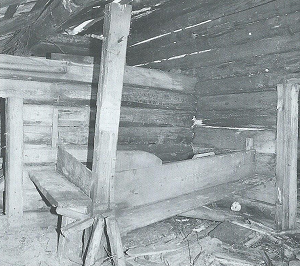
(auct. Markus Kunzmann – trad. Mia-Sophie Burgdorf)
Kübel (gem.) - Morpho-lexical type (Quote) (Visualize on the map)
The word is attested in Old High German as kubilo since the 10th century (cf. AWB: under kubilo). Especially in the wine-growing areas of the southern edge of the Alps, Latin cūpa was used to designate a large wooden vessel. From Upper Italy, the word then reached Upper German (cf. trent. ku'ej 'milking pail'). The original form, according to EWBD, (under bucket) is Old Provençal cubel 'small vat' with attested derivatives such as cubelot or Middle Latin cubellus (cf. FEW2, 1550 under cūpa). All go back to Latin cūpella, which Kluge also names as etymon (cf. Kluge: under bucket). Derivates of Kübel are found throughout the Eastern Alps (cf. the map Kübel), however, the alternative via the Old Prov., proposed by EWBD, seems unnecessarily complicated.
(auct. Thomas Krefeld | Markus Kunzmann – trad. Mia-Sophie Burgdorf)
Kuh (gem.) - Morpho-lexical type (Quote) (Visualize on the map)
(auct. Markus Kunzmann – trad. Mia-Sophie Burgdorf)
lăcte(m) (lat) - Base type (Quote) (Visualize on the map)
(auct. Myriam Abenthum | Stephan Lücke – trad. Mia-Sophie Burgdorf)
lonьcь (sla) - Base type (Quote) (Visualize on the map)
(auct. Aleksander Wiatr – trad. Mia-Sophie Burgdorf)
maceria (lat) - Base type (Quote) (Visualize on the map)
These two morpho-lexical types are mainly established in the Italian Eastern Alps (see the map on māceria) where the base type briefly commented on here could also emerge as an anthroponym and as a toponym (cf. Pallabazzer 1972, 71). Some examples are located on this map (this list is not exhaustive).
As a family name, Masarei (māceria + suffix -etum) lives on, especially in the Dolomites and particularly in Livinallongo del Col di Lana and Colle Santa Lucia.
(auct. Beatrice Colcuc – trad. Mia-Sophie Burgdorf)
Mahd (gem.) - Morpho-lexical type (Quote) (Visualize on the map)
(auct. Markus Kunzmann – trad. Mia-Sophie Burgdorf)
marmolada (roa.) - Morpho-lexical type (Quote) (Visualize on the map)
The Marmolata, at 3343 metres a.s.l., is the highest mountain in the Dolomites. Its northern face is covered by a glacier that used to reach almost as far as the Fedaia Pass (2057 metres a.s.l.), but is nowadays confined to the uppermost part of the mountain.
It can also be found in Tagliavini 1934 (202) as well as in Pult 1947 (41) where the word marmolada, meaning 'glacier', is given for the dialect from Livinallongo del Col di Lana. Consequently, the word would primarily designate the above-mentioned Dolomite peak, while the meaning 'glacier' could be the result of a metonymic process. Here, however, the following remark should be made: the Marmolata is a most impressive mountain, situated between the municipal areas of Livinallongo, Canazei, Rocca Pietore and Falcade. Accordingly, one could expect the same word or variants of it in the neighbouring idioms (at least in Canazei, since Rocca Pietore and Falcade do not represent AIS survey points). However, the type marmolada is only recorded as 'glacier' in Arabba on the AIS map. In Penia near Canazei (p. 313), /ˈʤaʧɐ/ and /ʤaʧˈoŋ/ (i.e. the morpho-lexical type glace (also with the suffix -on) (roa. f.) are attested, while in the slightly eastern Zuel near Cortina d'Ampezzo (p. 316), /ˈʒatso/ (morpho-lexical type ghiaccio roa. m.) appears.
Despite the record with the meaning in the relevant literature listed above, it appears from our own surveys in Livinallongo del Col di Lana that Marmolada is only known as the name of the mountain in this area. Unfortunately, Crowdsourcing does not at the moment provide any evidence for the municipality of Livinallongo and the concept GLACIER. Nevertheless, the people who were interviewed are all native speakers of the dialect in question. It therefore seems justified to raise the question of the legitimacy of the linguistic record marmolada. With respect to this, it is possible to hypothesise that the word marmolada attested in the AIS is the result of a misunderstanding that arose in the course of data collection: while the researcher wanted to know which word was used for GLACIER in the dialect, the informant may have mistakenly given the name of the mountain. The commentaries in Tagliavini 1934 and Pult 1947, as well as Masarei's dictionary entry (Blad), might also have been written based on this very questionable AIS record (Volume III, 1930). On the other hand, one could also assume that the word was still common for GLACIER at the beginning of the 20th century when the AIS surveys were carried out, but is no longer known today. Among the people we interviewed were speakers of an older age who also claimed never to have heard or used the word marmolada as meaning 'glacier'. The first hypothesis therefore seems more plausible.
(auct. Beatrice Colcuc – trad. Mia-Sophie Burgdorf)
Mist (gem.) - Morpho-lexical type (Quote) (Visualize on the map)
(auct. Marina Pantele – trad. Mia-Sophie Burgdorf)
muaglia (roa.) - Morpho-lexical type (Quote) (Visualize on the map)
The fact that muaglia denotes not only the individual, but also the collective, and furthermore not only the *COW*HERD, rules out a connection with Latin mulgēre, TO MILK. Rather, a connection with Latin mōbilia (n. pl.) has been established (FEW6, 3: 1 under mobilis]) which seems plausible. The term thus refers to the mobility of the livestock and should be understood as a complement to the immovable property. The word muvel (m.) (roa.) found in the Lower Engadine, which designates the LIVESTOCK, can also be traced back to Latin mōbilis (FEW loc. cit.).
(auct. Stephan Lücke – trad. Mia-Sophie Burgdorf)
muaglia (roa.) - Morpho-lexical type (Quote) (Visualize on the map)
(auct. Stephan Lücke)
mucca (roa.) - Morpho-lexical type (Quote) (Visualize on the map)
The cattle market of Lugano (the so-called "Fiera Grossa"), which took place every October from 1513 until the early 20th century, supplied all of northern Italy with cattle from central and eastern Switzerland as well as the neighbouring Austria (see HLS under Lugano [3 – Neuzeit]). It is quite possible that Tuscan farmers also frequented the cattle market in Lugano (see Tommaseo/Bellini loc. cit.). Consequently, it is indeed conceivable that a Tuscan word developed from a Swiss-German term that appeared in Ticino. It is also possible, however, that mucca represents a syncretism of vacca and mungere, 'to milk' (see Hall 1940; cf. also Tommaseo/Bellini, loc. cit.). The grc. word Μυκάω 'mungere' also given by Tommaseo/Bellini loc. cit. as a possible origin of mucca is not attested in the LSJ. The medial form μῡκάομαι recorded there means 'to roar, to drone' and thus is not semantically related to MUNGERE/TO MILK.
(auct. Stephan Lücke – trad. Mia-Sophie Burgdorf)
mŭlgēre (lat) - Base type (Quote) (Visualize on the map)
A connection with Malga is logical semantically, but phonetically problematic because of the differing sound vowel. According to Kluge, 614 lat. mulgere, like deu. milk and grc. ἀμέλγειν, goes back to ine. *melǵ- 'to milk'.
(auct. Myriam Abenthum | Thomas Krefeld | Stephan Lücke – trad. Mia-Sophie Burgdorf)
muvel (roa.) - Morpho-lexical type (Quote) (Visualize on the map)
(auct. Stephan Lücke)
*nīta (vor) (* = Reconstructed) - Base type (Quote) (Visualize on the map)
(auct. Myriam Abenthum | Thomas Krefeld – trad. Mia-Sophie Burgdorf)
Odel (gem.) - Morpho-lexical type (Quote) (Visualize on the map)
(auct. Marina Pantele – trad. Mia-Sophie Burgdorf)
pannus (lat) - Base type (Quote) (Visualize on the map)
(auct. Myriam Abenthum | Thomas Krefeld – trad. Mia-Sophie Burgdorf)
PART OF THE TREE, WOODY, VERTICALLY FIRM GROWING, ABOVE WHICH RISES THE CROWN OF BRANCHES BEARING LEAVES OR NEEDLES - Concept (Visualize on the map)
pasteur / pastore (roa.) - Morpho-lexical type (Quote) (Visualize on the map)
(auct. Aleksander Wiatr – trad. Mia-Sophie Burgdorf)
pellīcia (lat) - Base type (Quote) (Visualize on the map)
Note that the Alemannic forms are consistently masculine, while the Romansh pleʧɑ 'cream' (in Val Müstair in Grisons) is feminine and thus similar to the fra. pelisse and ita. pelliccia 'fur' (cf. FEW, 8, 162–164, under pĕllīceus). The Alemannic forms therefore seem to be secondary developments of a loanword of the German type Pelz that had already been adapted in gender. (It, of course, ultimately goes back to Latin pĕllīceus; cf. Kluge, 692 and AWB, under pelliz.) These forms are thus not relics from their local Romanic substrate, which, in terms of gender, would have to correspond more to the feminine pleʧɑ mentioned above.
(auct. Myriam Abenthum | Thomas Krefeld – trad. Mia-Sophie Burgdorf)
pĕllis (lat) - Base type (Quote) (Visualize on the map)
(auct. Myriam Abenthum | Thomas Krefeld – trad. Mia-Sophie Burgdorf)
pinguĕ(m) (lat) - Base type (Quote) (Visualize on the map)
(auct. Myriam Abenthum | Thomas Krefeld – trad. Mia-Sophie Burgdorf)
*pinguis (lat) (* = Reconstructed) - Base type (Quote) (Visualize on the map)
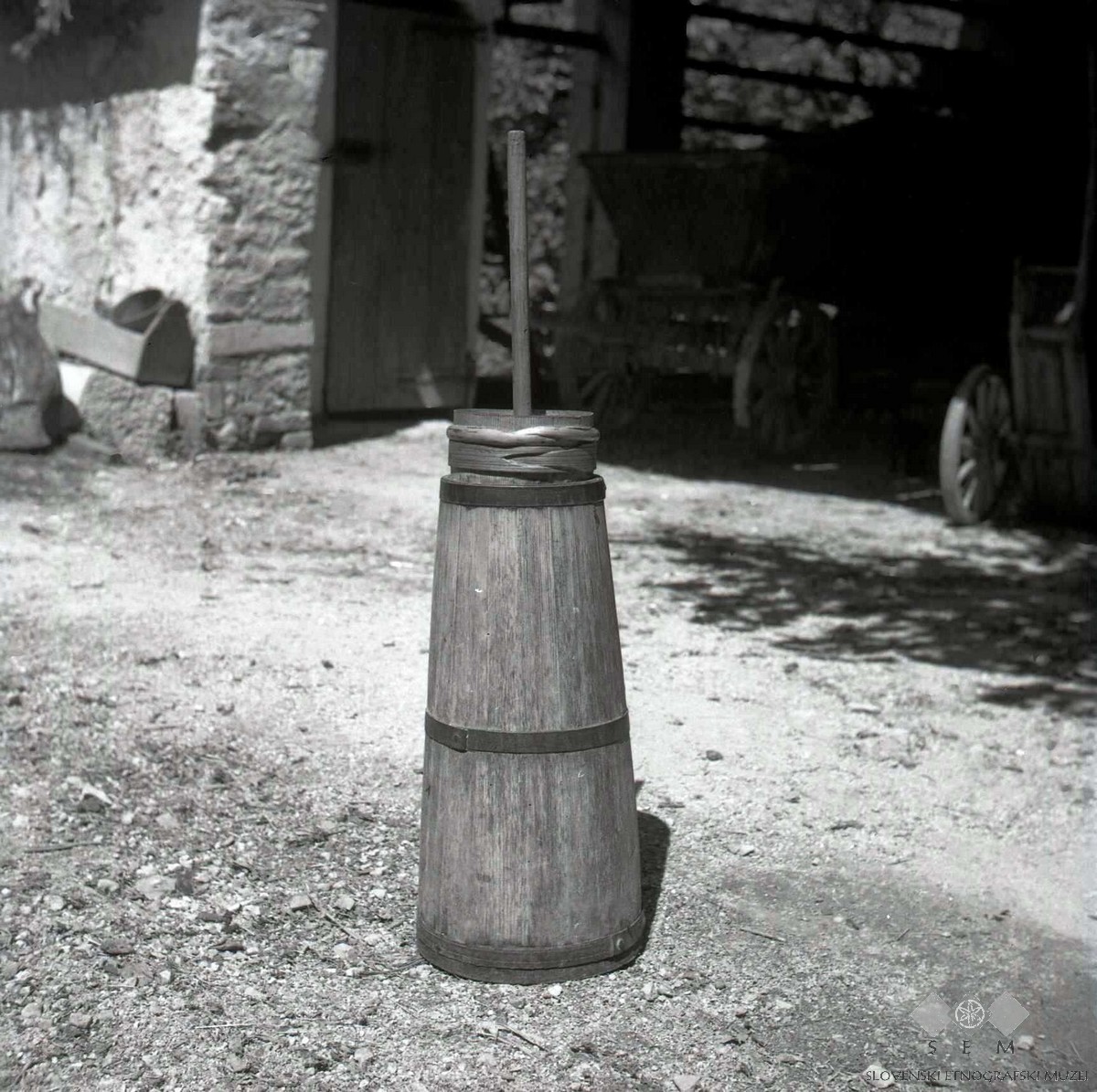
Some names have such striking phonetic similarity in the stem that their connection is hardly questionable:
- (1) roa. pigna, with the tonal vowel variants [ɪ, e, ɛ, a], etc.;
- (2) sla. pinja, an obvious romanism as its area of distribution is contiguous with that of (1);
- (3) roa. pinacc, which is a suffixed form of (1);
- (4) roa. panaglia (with variants of the initial unstressed stem vowel, corresponding to those mentioned in (1)). This type is dominated by variants with the unstressed stem vowel [a] .
- (5) The type pignatta 'pot', also known in Standardita., can be assigned to (1) along with its frequently masculine dialectal variant (cf. AIS 973), too. Although it is more commonly documented with the meaning 'pot of terracotta' (cf. AIS 955) within the VA area, outside of it, namely in Emilia-Romagna, it explicitly denotes a pot in which smaller quantities of butter are churned by beating (with a wooden spoon, etc.) (cf. the legend in AIS, Karte 1206, Type C).
- latte di pigna BUTTERMILK, literally 'milk from the churn' (in Trentino).
However, the origin proposed for ita. pignatta to ita. pigna 'pine cone' (< lat. *pīnea[m]) – "prob. [...] per la somiglianza di forma delle più antiche pignatte con una pigna" – is not convincing semantically. It is true that the conical shape of some terracotta and bronze pots may be reminiscent of pine cones (cf. DELI) but a historical reference to the subject that is decisive for the history of the word can be taken from the AIS map mentioned above 955 LA PENTOLA (PIGNATTA) DI TERRACOTTA. In fact, it also contains a list of names for BRONZE POTS (AIS 955_2), some of which have been transferred to it secondarily, especially in the Alpine area, since they go back to a completely different material used to make cooking pots, namely the so-called soapstone, ita. steatite, laveggio, deu. also Lavetz(stein) (cf. the commentary on AIS map 963, LA MARMITTA as well as AIS 970 IL VASO PER LO STRUTTO). This versatile material, which was comparatively easy to use because of its rather soft surface was mined mainly in the Ticino and Lombard mountains and was also used to make other objects, such as stoves, which in Romansh are also called pegna, (Engadine) pigna (HWdR, 571; LRC, 798; on pigna, pegna 'oven of soapstone' cf. the commentary on AIS 937. These ovens, incidentally, are 'nearly cubic' (AIS 937, commentary)) and do not bear the slightest resemblance to a pine cone.
Consequently, this is a clear case of metonymic polysemy (rather than homonymy). Pigna 'stove' and pigna 'vessel for churning butter' are named after the material from which both were made: soapstone. However, it is not strictly necessary to assume a pre-Roman etymon, as Alexi Decurtins suggests in LRC, 798) for Romansh pegna | pigna 'oven'. Formally, the etymology could well be that proposed by G. B. Pellegrini *pinguia (Latin pĭnguis 'fat') – but not elliptically from pinguia(m) (ollam) in the sense of a 'vessel (= Lat. olla) for fat' ("Recipiente particolare per conservare il grasso, fosse esso strutto, sugna, o burro cotto, oppure un arnese elementare per fare il burro" ([1976, p. 171 cit. DELI 928]), but in the sense of a mineral or rock similar to fat in terms of its appearance and consistency (cf. similarly motivated deu. Speckstein). Latin *pinguia (petra) 'soapstone' is therefore suggested as the base type for (1)–(5).
The many forms with the stem vowels [ɐ, a] show a strong and obvious onomasiological influence by the etymologically sepate panna 'cream'. Not related to this type, however, are
(6) Lombard pench, raw. paintg 'butter', which should be traced back directly to pĭnguis 'fat' (HdR).
(7) Roh. penn 'buttermilk'
could be a regression based on pigna 'butter churn' since the buttermilk is drained from it.
The following diagram shows the word family (green arrows) as well as the recorded meanings (red arrows).
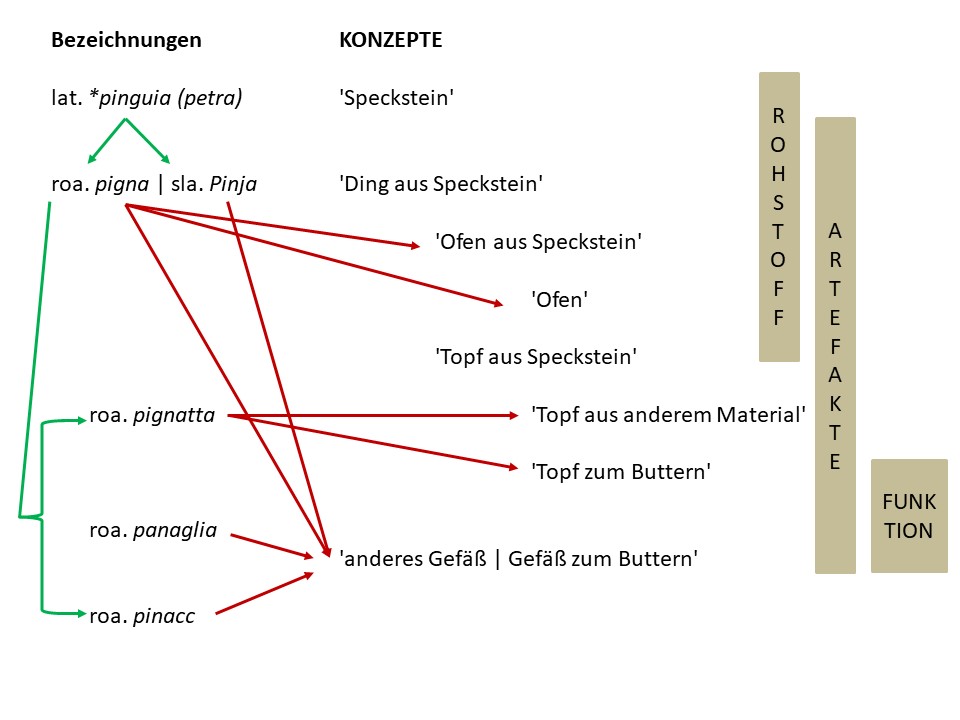
With regard to the metonymic motivation of the polysemy, the transfer of the terms from the natural raw material to artefacts of increasing complexity made from it (simple vessel > mechanical device) and finally to the functions associated with it can thus be observed.
(auct. Thomas Krefeld – trad. Mia-Sophie Burgdorf)
pischada (roa.) - Morpho-lexical type (Quote) (Visualize on the map)
(auct. Thomas Krefeld – trad. Mia-Sophie Burgdorf)
planina (sla.) - Morpho-lexical type (Quote) (Visualize on the map)
(auct. Aleksander Wiatr)
*puína (* = Reconstructed) - Base type (Quote) (Visualize on the map)
(auct. Myriam Abenthum | Thomas Krefeld – trad. Mia-Sophie Burgdorf)
Quark (gem.) - Morpho-lexical type (Quote) (Visualize on the map)
Middle German varieties originally borrowed the word from the North Sorbian twarog, which is how it entered New High German. In Middle High German it is still attested as twarc (cf. Kluge under Quark; DWDS under Quark).
(auct. Markus Kunzmann – trad. Mia-Sophie Burgdorf)
ROCK - Concept (Quote) (Visualize on the map)
Schmalz (gem) - Base type (Quote) (Visualize on the map)
With the meaning of 'butter', Schmalz also became a loanword in Alpine Romansh; cf. lld. smàlz (EWD VI: 273–274; Blad under smauz).
This type nicely shows the need, in the context of VerbaAlpina, to differentiate between the most remote etymon (Italian linguistics speaks of the etimologia remota; cf. Schweickard 2010) and the base type of the forms recorded. Naturally, the ger. Schmalz corresponds to the verb schmelzen, as Kluge elaborates:
„Sn std. (9. Jh.), mhd. smalz, ahd. smalz, mndd. smalt, smolt, mndl. smout as 'rendered fat' from schmelzen. Verb: schmalzen; adjective: schmalzig" (Kluge).
However, it seems that the noun in only documented in Dutch and German. It further seems to be the case that all forms recorded within VA's materials must be attributed to this noun. Because of this, it would be misleading to adduce a reconstructed Indo-Germanic verbal stem like *smelt-a.
(auct. Myriam Abenthum | Thomas Krefeld – trad. Mia-Sophie Burgdorf)
*serāceum (lat) (* = Reconstructed) - Base type (Quote) (Visualize on the map)
This base type goes back to a Late Latin derivation of the term for whey cheese from lat. sěrum 'whey' with -aceus, which can be located in Upper Italy, Savoy and Switzerland. The base type is mainly preserved in Francoprovençal and Occitan. From *sēraceum emerged frp. seraz, which passed into French as sérac. The French spelling preserves the -c of *sēraceum simply for graphic reasons. From the French of Western Switzerland, Rescherack 'salted whey cheese' was borrowed into Swiss German (cf. FEW 11, 495 under *serāceum; cf. Idiotikon 4, 1642 under Rescherack; cf. TLFi under sérac).
(auct. Myriam Abenthum)
seracium (lat) - Base type (Quote) (Visualize on the map)
This base type goes back to a Late Latin derivation of the term for whey cheese from lat. sěrum 'whey' with -aceus, which can be located in Upper Italy, Savoy and Switzerland. The base type is mainly preserved in Francoprovençal and Occitan. From *sēraceum emerged frp. seraz, which passed into French as sérac. The French spelling preserves the -c of *sēraceum simply for graphic reasons. From the French of Western Switzerland, Rescherack 'salted whey cheese' was borrowed into Swiss German (cf. FEW 11, 495 under *serāceum; cf. Idiotikon 4, 1642 under Rescherack; cf. TLFi under sérac).
(auct. Myriam Abenthum – trad. Mia-Sophie Burgdorf)
sidretg (roa.) - Morpho-lexical type (Visualize on the map)
*skūm (gem) (* = Reconstructed) - Base type (Quote) (Visualize on the map)
(auct. Myriam Abenthum | Thomas Krefeld | Stephan Lücke – trad. Mia-Sophie Burgdorf)
sōlārium (lat) - Base type (Quote) (Visualize on the map)
(auct. Sonja Schwedler-Stängl | Aleksander Wiatr – trad. Mia-Sophie Burgdorf)
*sponga (* = Reconstructed) - Base type (Quote) (Visualize on the map)
(auct. Myriam Abenthum – trad. Mia-Sophie Burgdorf)
srasa (roa.) - Morpho-lexical type (Quote) (Visualize on the map)
(auct. Myriam Abenthum | Thomas Krefeld – trad. Mia-Sophie Burgdorf)
tēla (lat) - Base type (Quote) (Visualize on the map)
(auct. Myriam Abenthum | Thomas Krefeld – trad. Mia-Sophie Burgdorf)
Tenne (gem.) - Morpho-lexical type (Quote) (Visualize on the map)
(auct. Marina Pantele – trad. Mia-Sophie Burgdorf)
*toma (vor) (* = Reconstructed) - Base type (Visualize on the map)
tomme / toma (roa.) - Morpho-lexical type (Quote) (Visualize on the map)
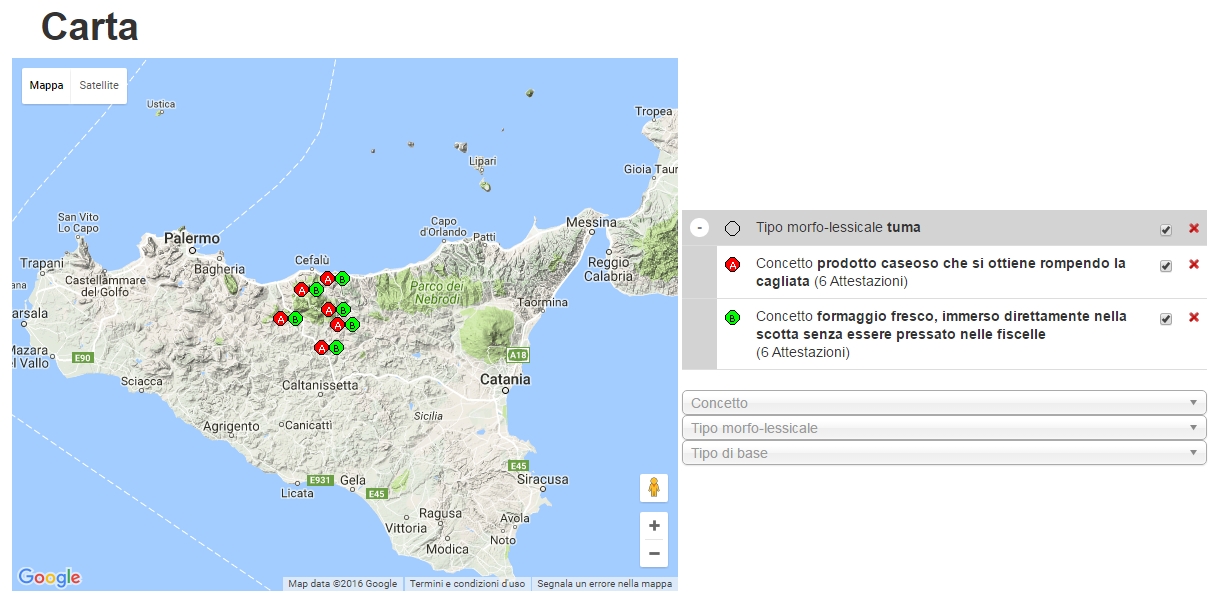
scn. tuma, which apparently came with the Gallo-Italian colonists in the wake of the Norman conquest, denoted the unformed fresh cheese, while scn. formaggiu denotes exclusively and very much in keeping with the etymology the moulded cheese, more precisely: the cheese mass of different degrees of ripeness pressed in moulded vessels:
"tuma GA ['tuma], GE → etn., AL → etn., CA → etn., IS. → etn., PO → etn. ['tuma],['tumwa] f. prodotto caseoso che si ottiene rompendo la cagliata. 2. formaggio fresco non sottoposto a sterilizzazione nella scotta. 3. formaggio fresco, immerso direttamente nella scotta senza essere pressato nelle fiscelle.
Rotta la cagliata (→ quagghiata) nella → tina, la massa caseosa che precipita sul fondo e che viene raccolta (→ accampari, → arricampari) e sistemata a scolare nel → tavulìeri è ormai detta tuma. La tuma, poi, facoltativamente tagliata a cubetti, viene sistemata in fiscelle (→ ntumari, → ntumalora) perché possa scolare ulteriormente. Tuma è, inoltre, chiamato il formaggio che non viene sottoposta a sterilizzazione nella scotta (cfr. GE) e che generalmente viene consumato subito [...]
Etn[otesto]. GE [a Geraci; TK] a tuma un ci â d'èssiri misa nâ → vasceɖɖa, si ssi parra di tuma.
Trad. «la 'tuma' non va messa [raccolta] nelle fiscelle, se parliamo della 'tuma' ». [...]
Etn. IS [a Isnello, TK] a tuma jeni u prodottu che si ffa ppoi u → formàggiu
Trad. «La 'tuma' è il prodotto [la pasta caseosa] che [con cui] si fa il formaggio». [...]" (Sottile 2002, 168)
Trad. «La 'tuma' è il prodotto [la pasta caseosa] che [con cui] si fa il formaggio». [...]" (Sottile 2002, 168)
(auct. Thomas Krefeld – trad. Mia-Sophie Burgdorf)
Topfen (gem.) - Morpho-lexical type (Quote) (Visualize on the map)
The distribution of Topfen is interesting from variety linguistic point of view. It is known and used as a dialectal form in Bavarian but stands alongside the common German standard variant Quark which is also mentioned as a dialectally used form. The presence of the variant Quark probably indicates that Topfen is being displaced a basic dialectal form. Contrary to the German standard, Topfen is a commonly used standard variant in Austria. This is visible in the fact that Quark is virtually non-existent as a dialectal variant while the Alemannic Vorarlberg has implemented Topfen into the dialect as a Bavarian quasi-loanword.
(auct. Markus Kunzmann – trad. Mia-Sophie Burgdorf)
traire (roa.) - Morpho-lexical type (Quote) (Visualize on the map)
(auct. Thomas Krefeld – trad. Mia-Sophie Burgdorf)
*tsigros/tsigronos (gal) (* = Reconstructed) - Base type (Quote) (Visualize on the map)
"Tieger. Sm ‛curd' per. wobd. (15th century), mhd. ziger, spahd. ziger. A word of the Alpine dialects. Origin uncertain."
Hubschmied 1936, 93–95, suggested a Gallic etymon *tsigros or *tsigronos 'second warming'; the second form is necessary to explain the Romansh morpho-lexical type with a stressed suffix (Tschagrun). The dating given by Kluge is now outdated, as the word is already attested several times in the Consuetudines of the Hirsau monastery from the end of the 11th/beginning of the 12th century (cf. Bulitta 2018, 203). Hubschmied's approach is not weakened by this.
The restriction to West Upper German ("wobd.") claimed by Kluge must also be revised in view of the Tyrolean evidence on the VA map.
(auct. Thomas Krefeld – trad. Mia-Sophie Burgdorf)
*ungere (lat) (* = Reconstructed) - Base type (Quote) (Visualize on the map)
(auct. Myriam Abenthum | Thomas Krefeld – trad. Mia-Sophie Burgdorf)
unguere (lat) - Base type (Quote) (Visualize on the map)
"Anke(n), (replaced by Butter) Sm ‛Butter' per. wobd. (8th century), mhd. anke, ahd. anko. Although the word is only preserved in German, g. *ankwōn m. ‛fat, butter' must be assumed as the continued form of ig. ( weur.) *ongwen- ‛ointment, fat, butter' (with various degrees of ablaut), cf. l. unguen n. ‛fat, ointment', air. imb ‛butter' (*ṇgwen-) of the verbal root ig. *ongw- ‛ointments' in ai. anákti, l. unguere and so forth. So, it originally meant ‛ointment, grease'." (Kluge, 47)
On the one hand, this reveals a plausible connection. On the other hand, however, an improbable etymological conclusion emerges: Kluge interprets the word as an isolated Indo-Germanic relict, although it would be much more logical to attribute this southwestern German (Alemannic) type to Latin-Romanic. The mentioned Latin base with the velar has admittedly been displaced by the variant *ŭngĕre (cf. REWOnline 9069, under ŭngĕre) in the directly neighbouring Romance contact area, as can be seen from the palatalisation of the g in roh. (Surselvic) unscher, eng. uondscher, ita. ungere and others (cf. HWdR, 971). In what is now the French region, however, cognates of lat. ŭnguĕre are predominant (cf. FEW 14, 36f. under unguere). Among them are also forms with clear semantic reference to milk processing, such as ogner 'donner son lait | giving milk' (with change of conjugation class) and ogna 'quantité de lait que donne une vache en une fois | quantity of milk given by a cow at once'. Incidentally, the participle unctum gave rise to the Friulian term for BUTTER ont, lld. onto, vonto (cf. ron. unt). The hereby suggested borrowing from Latin-Romance is phonetically possible and semantically self-evident considering the numerous other romanisms in this onomasiological field. In view of the much wider distribution of the type butyru(m), it is also obvious to see an older type in the designations derived from the verb variants ŭnguĕre, *ŭngĕre, which was later superimposed by butyru(m).
(auct. Thomas Krefeld – trad. Mia-Sophie Burgdorf)
vannus (lat) - Base type (Quote) (Visualize on the map)
This type is also present in the toponymy of the Alpine region: consider the place names Van delle Sasse and Van de Zità in the Belluno Dolomites. According to Pellegrini 1990, 206 the form van bears the meaning 'tub of stone' and indeed Van delle Sasse and Van de Zità represent hollows, glacial basins between high Dolomite peaks.
(auct. Beatrice Colcuc – trad. Mia-Sophie Burgdorf)
vědro (sla) - Base type (Quote) (Visualize on the map)
(auct. Aleksander Wiatr)
vendúl (roa.) - Morpho-lexical type (Quote) (Visualize on the map)
This type is also wide-spread in toponymy: The place name vandulo appears in the Canton of Grisons as well as in Italian Switzerland. In the Bergamo area, for example, a "via vandullo" can be found. In the Dizionario Toponomastico Trentino, place names such as bochèt dei vandùi, vandùgola and many more are recorded. Finally, the place name Vandoies (deu. Vintl) in the South Tyrolean Pustertal could also be related to this word type. Place names of the type (la)oi(es) occur in several variants in the Dolomites: Oies in Abtei, Lavoi in Colle Santa Lucia, Laoi in Rocca Pietore and denote 'mud' or 'muddy ground' (cf. Liotto/Anvidalfarei/Irsara 2014, 183; cf. Pallabazzer 1972, 49). The toponym Vandoies, which is composed of van and Oies, could mean 'basin, covered with mud' or 'puddle of water'.
Jokl suggests that the type is etymologically derived from ine. *uendh- 'to turn' (cf. Jokl 1945/1946, 203); Pult 1947 prefers cel. vind- or vindos 'white'. Hubschmid is convinced of the Latin origin and considers Latin vannus 'grain vat' to be the etymon (cf. also Georges under vannus). With regard to this, he notes that it is a metaphorical transfer "from the object to the terrain" (cf. Hubschmid 1950, 74). Hubschmid's suggestion seems to be the most plausible solution not only for phonetic but also for semantic reasons (see also the commentary on the base type vannus).
(auct. Beatrice Colcuc – trad. Mia-Sophie Burgdorf)
WHEY - Concept (Quote) (Visualize on the map)
zimbar (goh) - Base type (Quote) (Visualize on the map)
Zimbar stands for constructions made of wood, as is clear from the related forms in the other Germanic languages; cf. Kluge 2012 (online n.p.):
"Zimmer, Sn std. (8th century), mhd. zimber, zim(m)er m./n., ahd. zimbar, as. timbar ‛living space, dwelling, wooden building, timber'.
From g. *temra- n. ‛Building timber, timbered', also in anord. timbr, ae. afr. timber; gt. in tim(b)rjan ‛to timber' (like anord. timbra, ae. timbr(i)an, afr. timbria, timmeria, as. timbron, ahd. zimb(a)rōn, mhd. zimbren, zimmern, nhd. zimmern). [...]".
Lat. camera, on the other hand, presupposes stone construction, which the Old High German evidence points out just as unmistakably as the concise article in Kluge 2012 (online n.p.):
"Kammer Sf erw. obs. (8th century), mhd. kamer(e), ahd. chamara, as. kamara.
Borrowed early from l. camera ‛vaulted ceiling', then ‛room with vaulted ceiling, vaulting', which in turn is borrowed from gr. kamára ‛vault, vaulted chamber'. [...] Likewise nndl. kamer, ne. chamber, nfrz. chambre, nschw. kammare, nnorw. kammer".
Greek lexicography confirms this depiction (see LSJ, under κᾰμάρ-α, Ion. κᾰμάρ-η [μᾰ], ἡ). The widespread adoption of stone construction is known to have resulted in numerous Latin-Romanic borrowings in German (Examples). In this light, it is remarkable that there is no indication in the VerbaAlpina material of a borrowing in the opposite direction, i.e., from zimbar into Romance languages. However, timber construction was by no means completely displaced. The borrowing of the type zimbar into Slovenian shows that, especially in areas such as the Alps, where both materials are readily available depending on the altitude, it apparently became well established and spread alongside stone construction (cf. the map). Incidentally, the onomasiologically related base type thilla, deu. Diele, which was also borrowed into Slovenian, but not into Romanic languages, presents itself quite analogously (cf. map). This results in the following stratigraphic sketch:
| STRATO romanzo | .STRATO gem. (ted.) | STRATO slavo (slov.) | ||
| camera | .Chamber | .Diele, Zimmer→ | .→→ dilje, cimr | chamber | .
| ↑ | .SOSTRATO ↑ | . |
SOSTRATO ↑ | .|
| latino-romanzo camera | ||||
(auct. Thomas Krefeld – trad. Mia-Sophie Burgdorf)
žlěbъ (sla) - Base type (Quote) (Visualize on the map)
(auct. Aleksander Wiatr – trad. Mia-Sophie Burgdorf)

